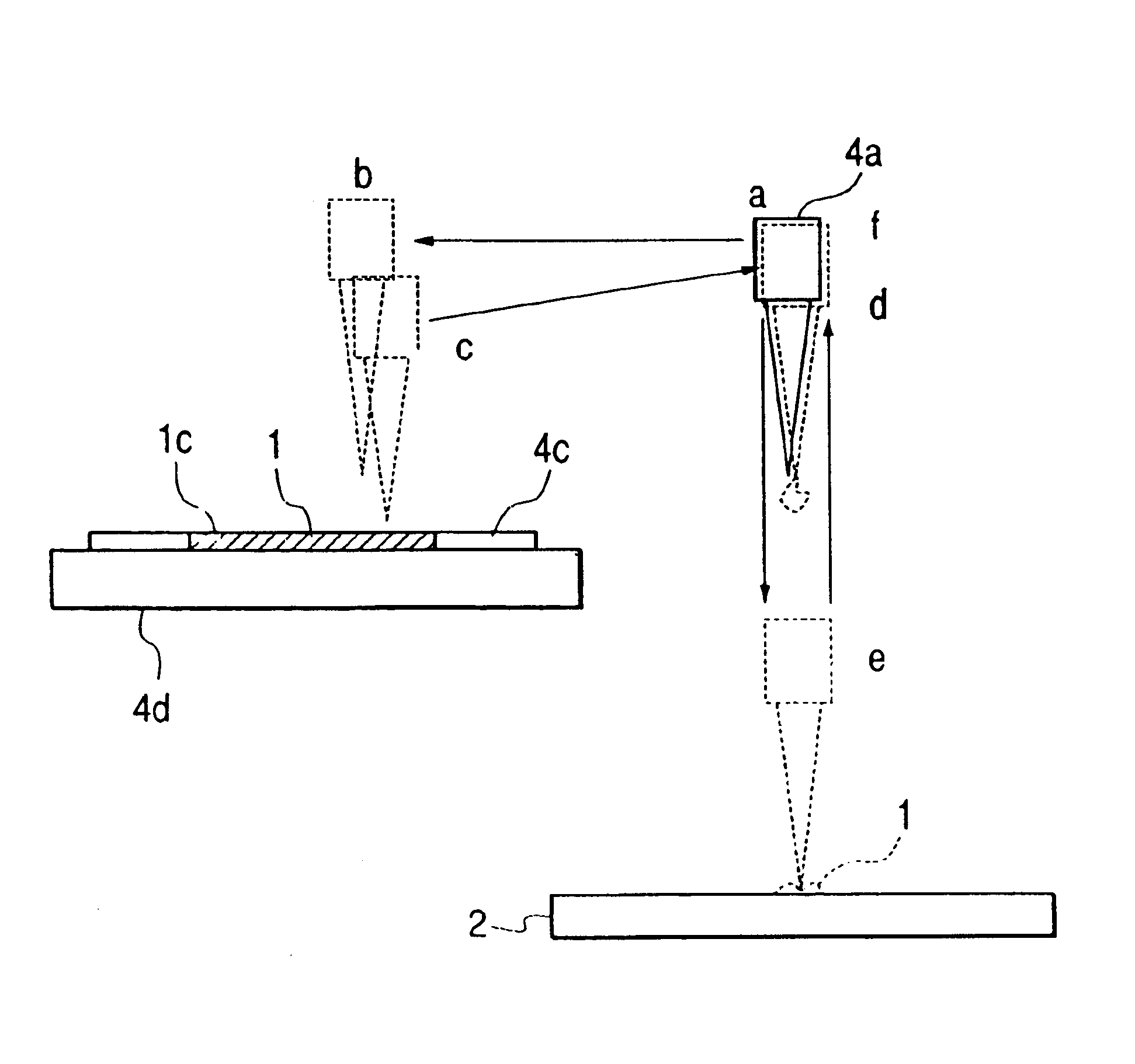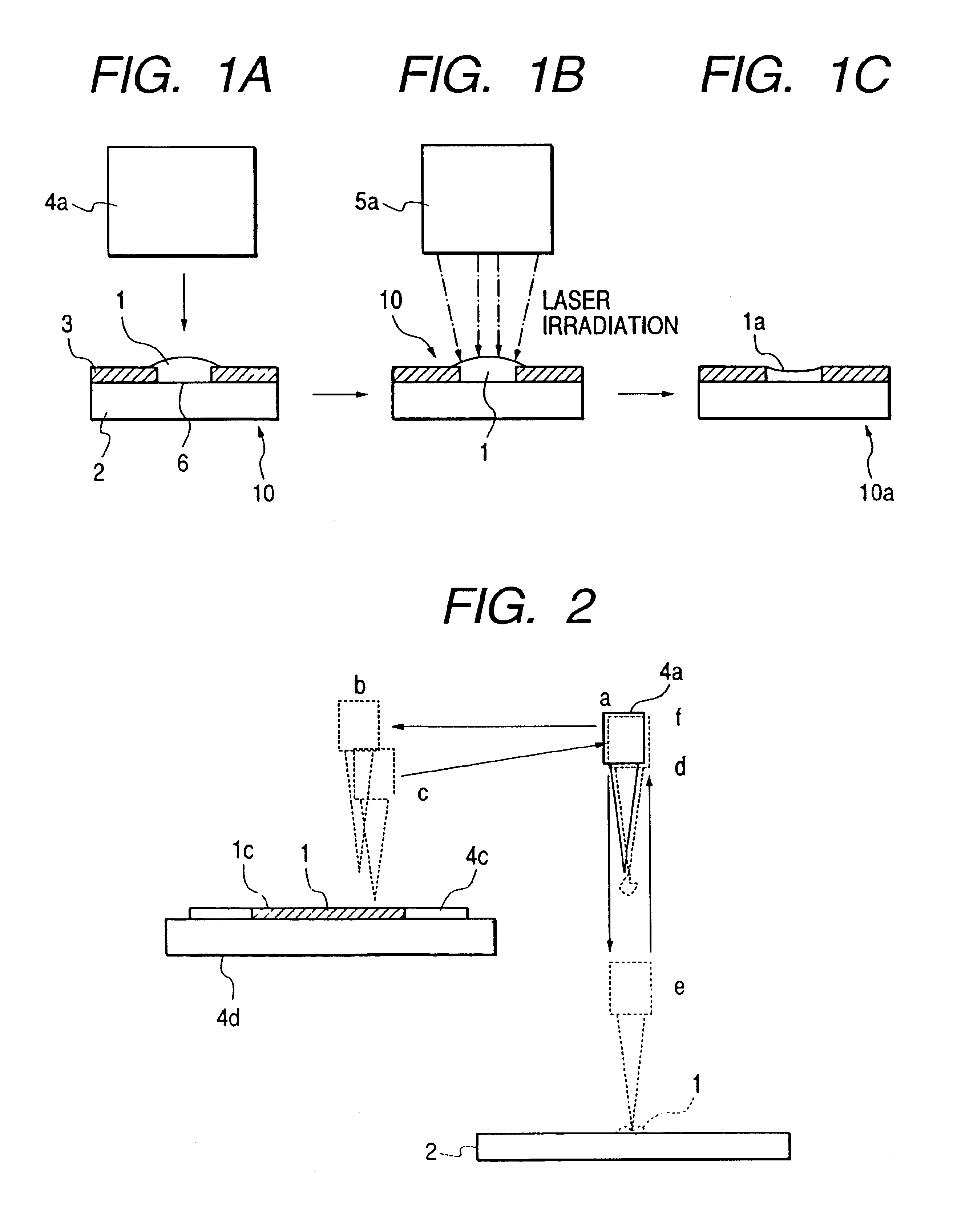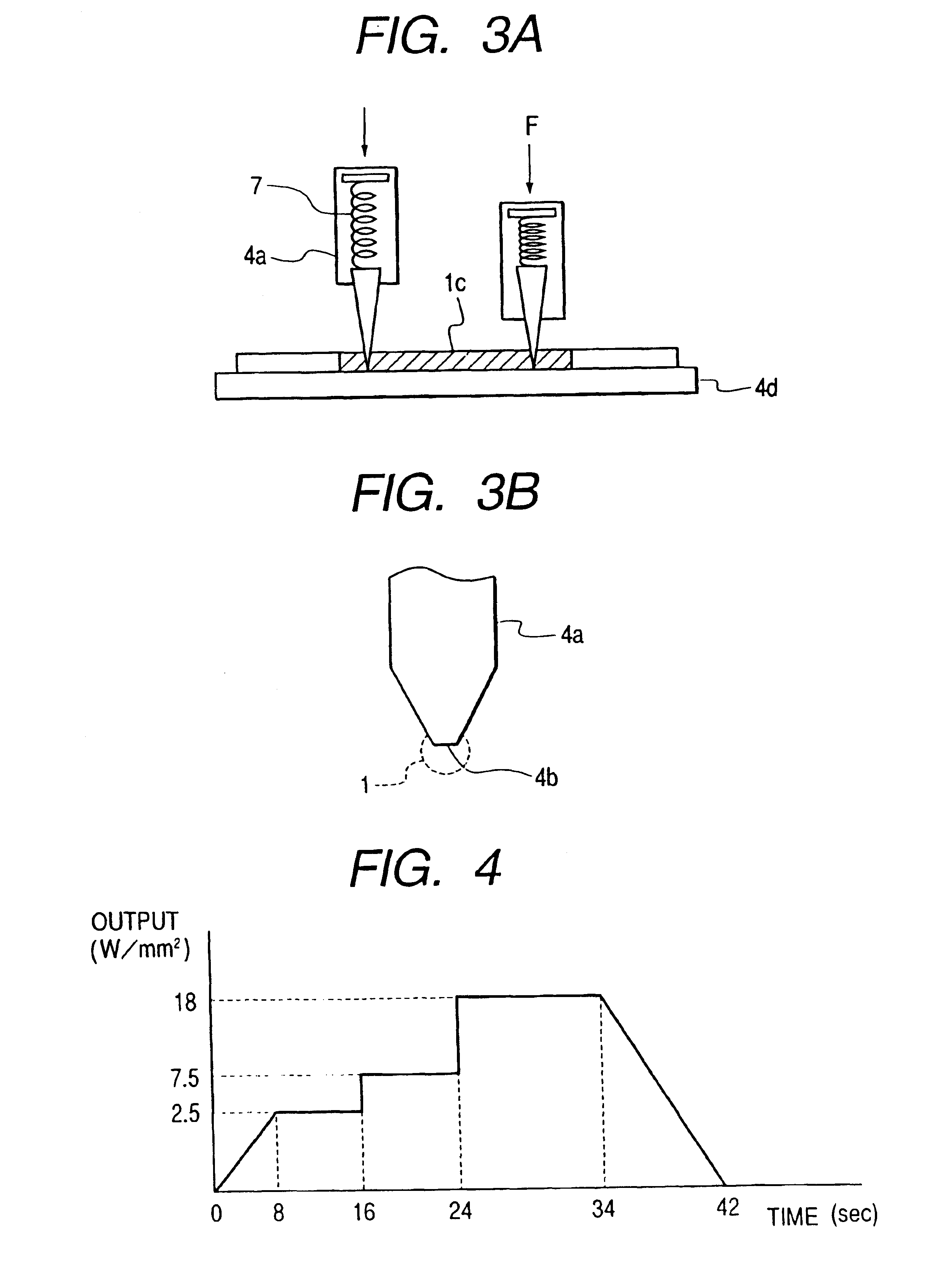Substrate having repaired metallic pattern and method and device for repairing metallic pattern on substrate
- Summary
- Abstract
- Description
- Claims
- Application Information
AI Technical Summary
Benefits of technology
Problems solved by technology
Method used
Image
Examples
Embodiment Construction
A substrate having an electrode repaired according to the present invention will be described with reference to the drawings.
FIG. 1A, FIG. 1B and FIG. 1C schematically show steps of a method for repairing a broken defect, FIG. 1A shows a state in which paste 1 comprising metallic organic compound is applied on an open defect 6, FIG. 1B shows a state of heating the paste 1, and FIG. 1C shows the repaired state of the open defect 6 after heating.
In FIG. 1A, a substrate 10 shows a state of the substrate before repairing, in which paste 1 comprising metallic organic compound and an electrode 3 are laminated on a glass substrate 2. Glass substrate 2 is an ordinary substrate, and electrode 3 is made of ordinary material of ITO, or the like, and is formed in a line by patterning and etching on glass substrate 2 in an equal width and in an equal pitch. Further, paste 1 comprising metallic organic compound is formed by a transfer unit 4 on an open defect 6 of electrode 3 on the glass substra...
PUM
| Property | Measurement | Unit |
|---|---|---|
| Time | aaaaa | aaaaa |
| Time | aaaaa | aaaaa |
| Time | aaaaa | aaaaa |
Abstract
Description
Claims
Application Information
 Login to view more
Login to view more - R&D Engineer
- R&D Manager
- IP Professional
- Industry Leading Data Capabilities
- Powerful AI technology
- Patent DNA Extraction
Browse by: Latest US Patents, China's latest patents, Technical Efficacy Thesaurus, Application Domain, Technology Topic.
© 2024 PatSnap. All rights reserved.Legal|Privacy policy|Modern Slavery Act Transparency Statement|Sitemap



